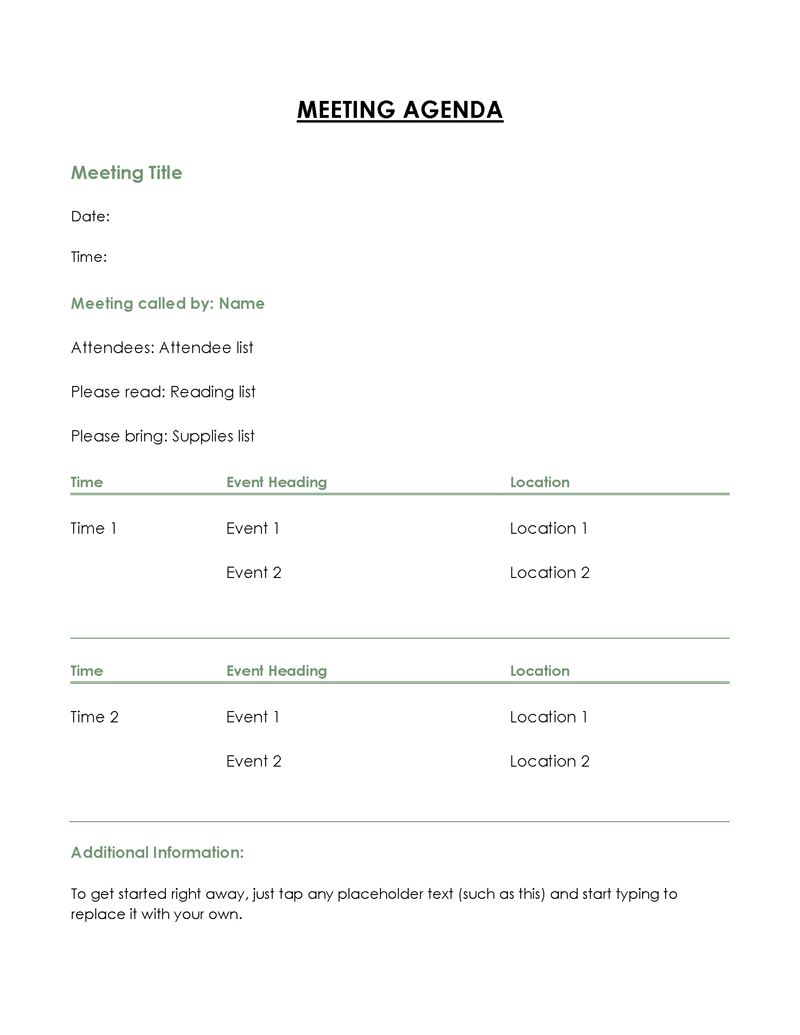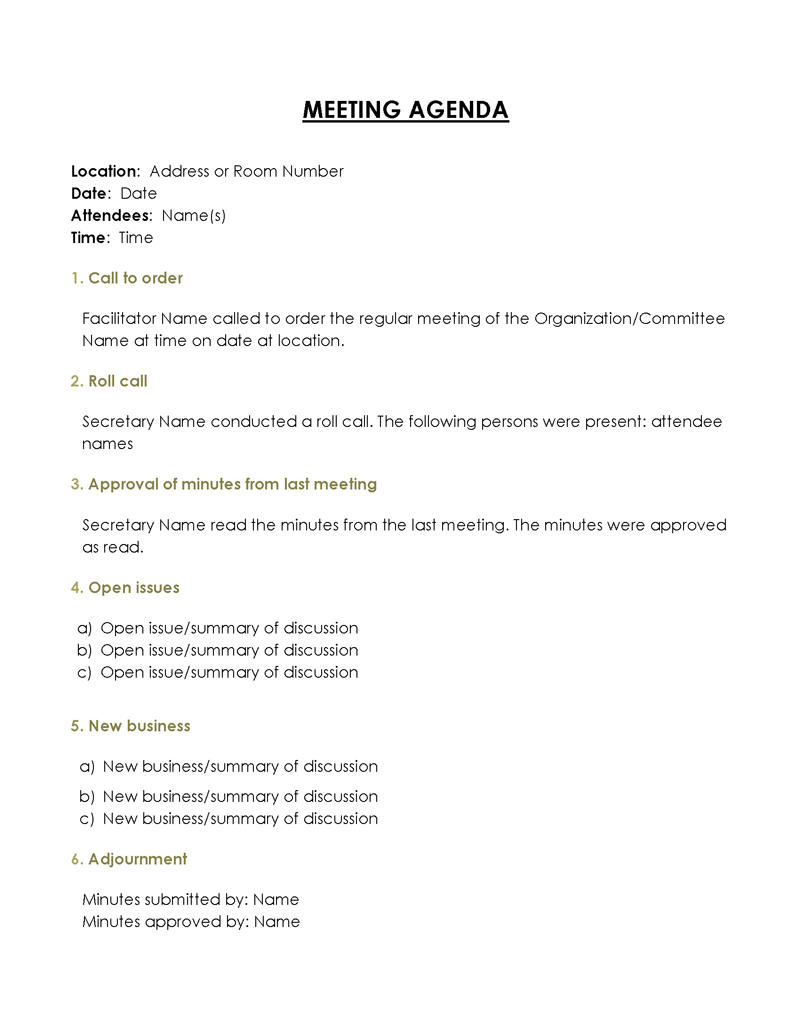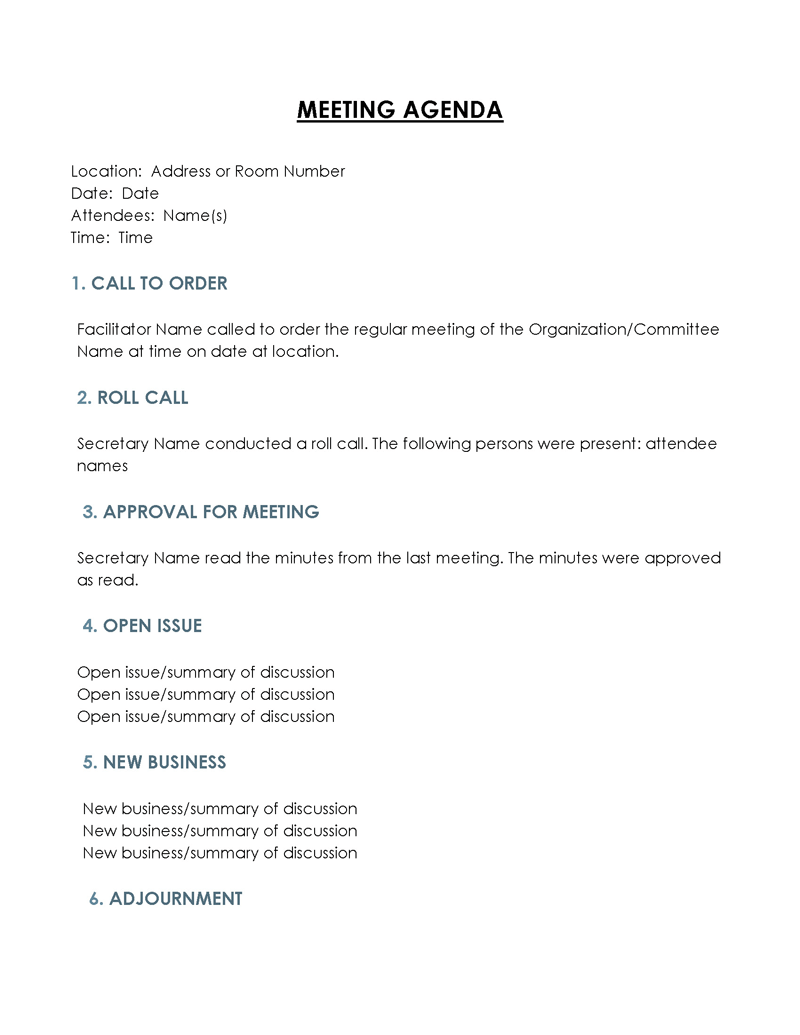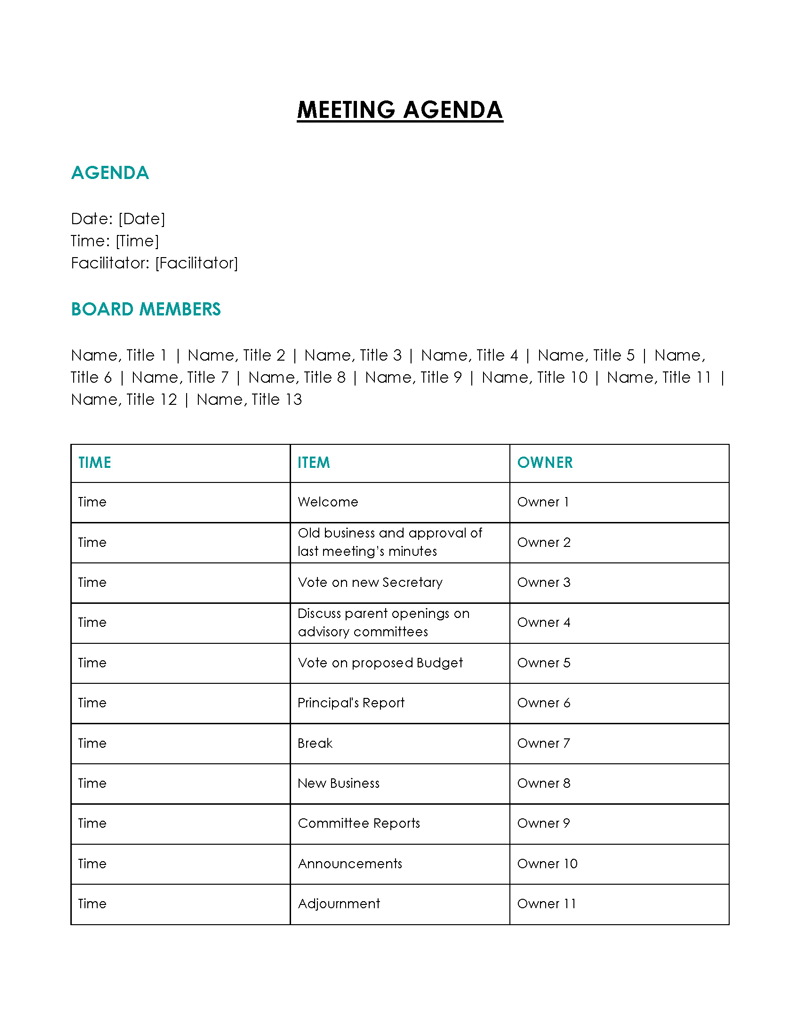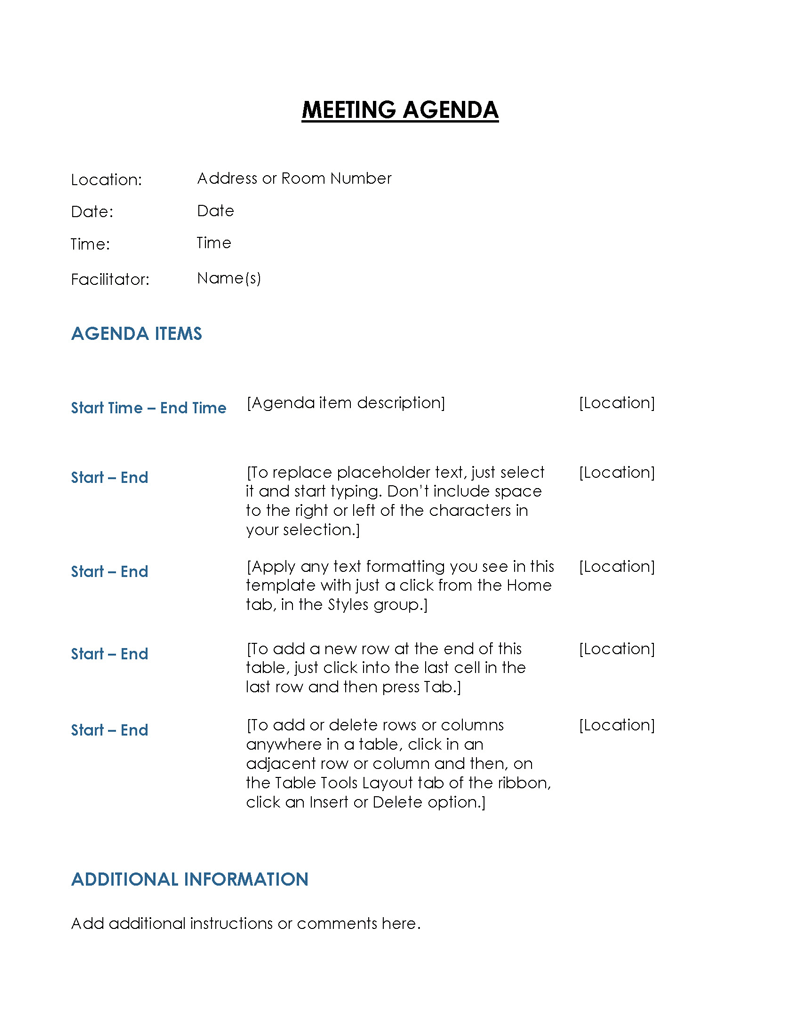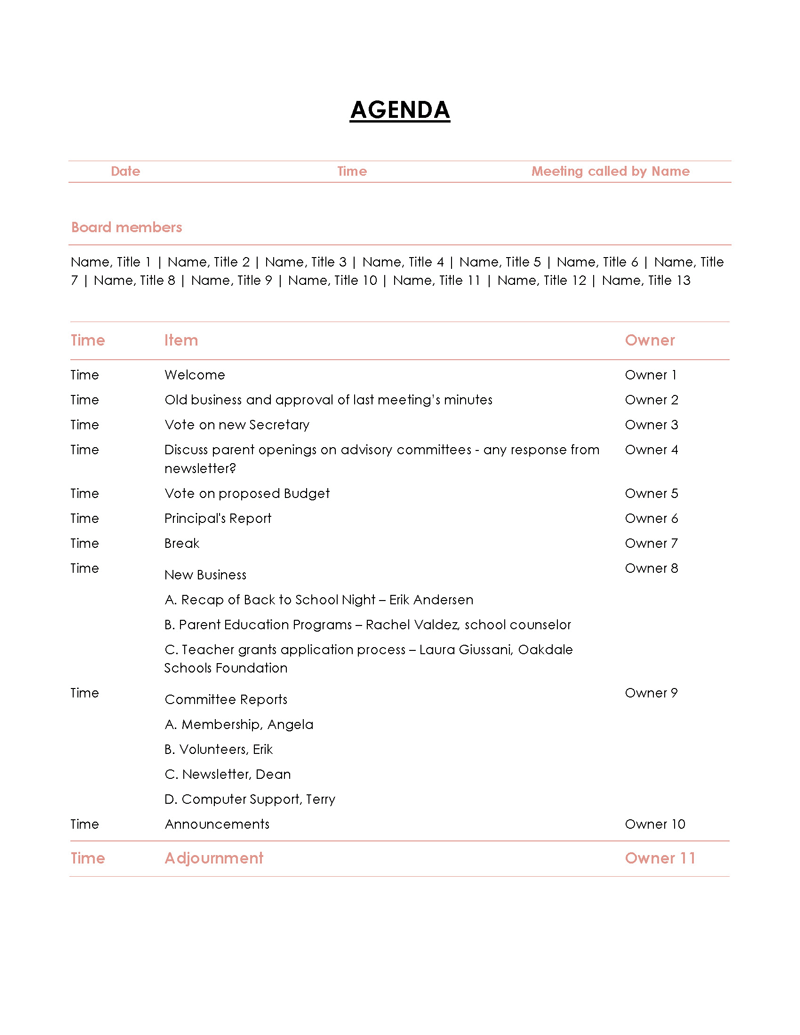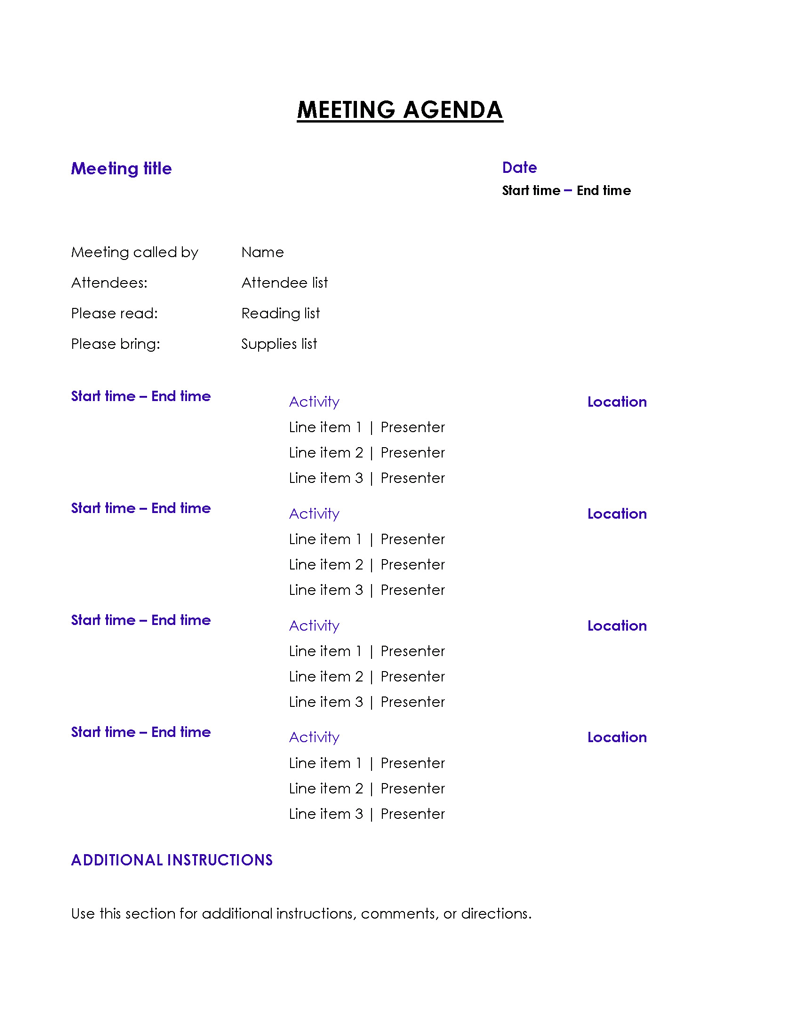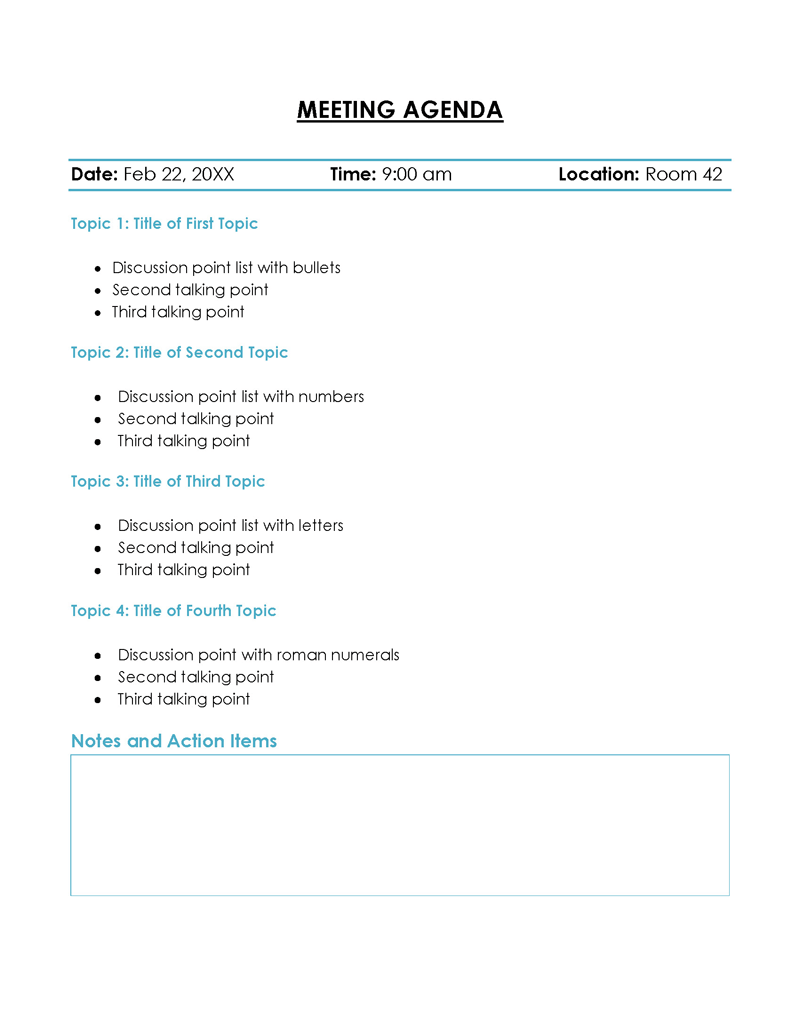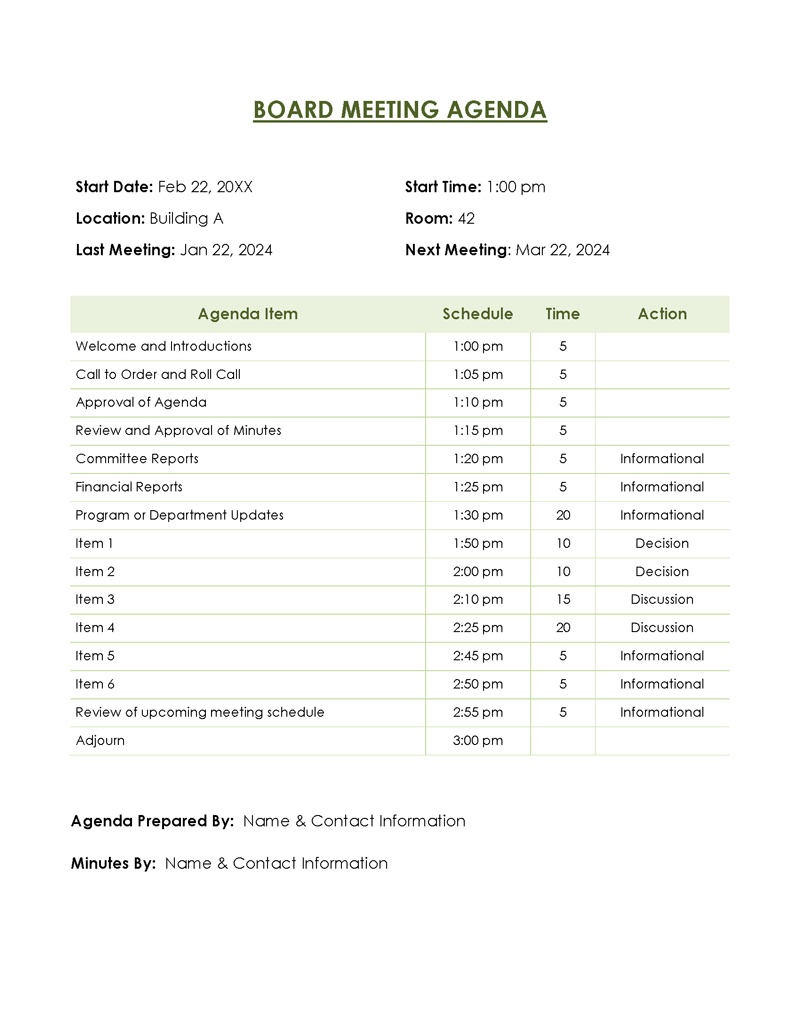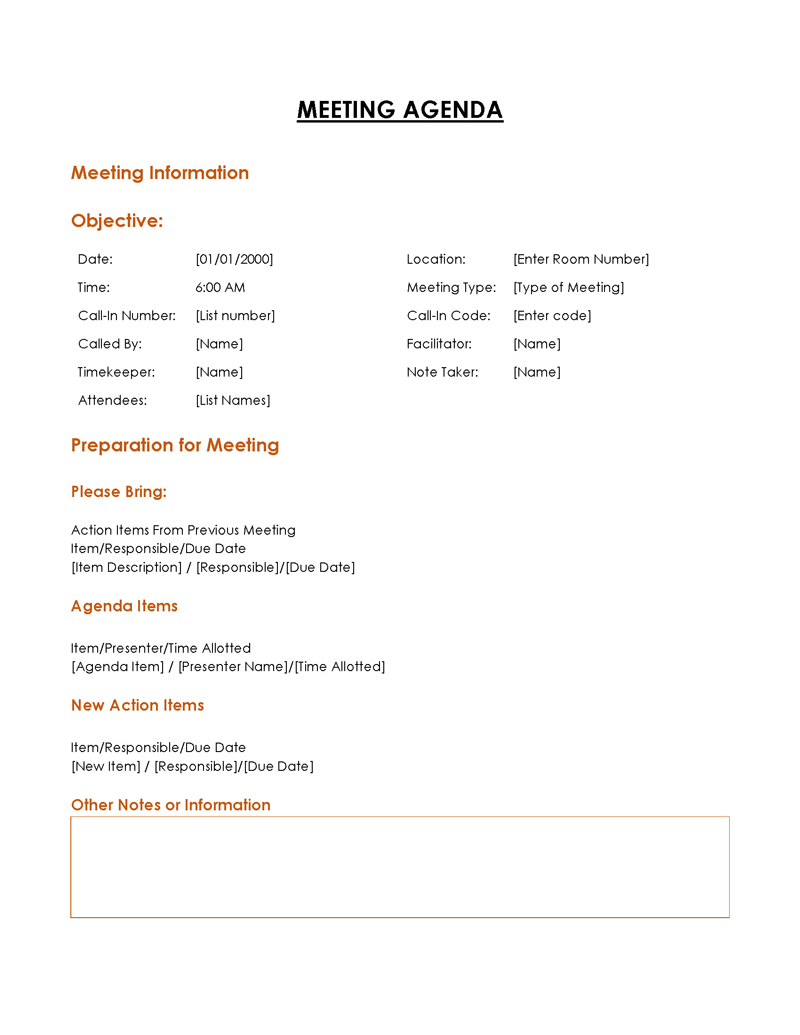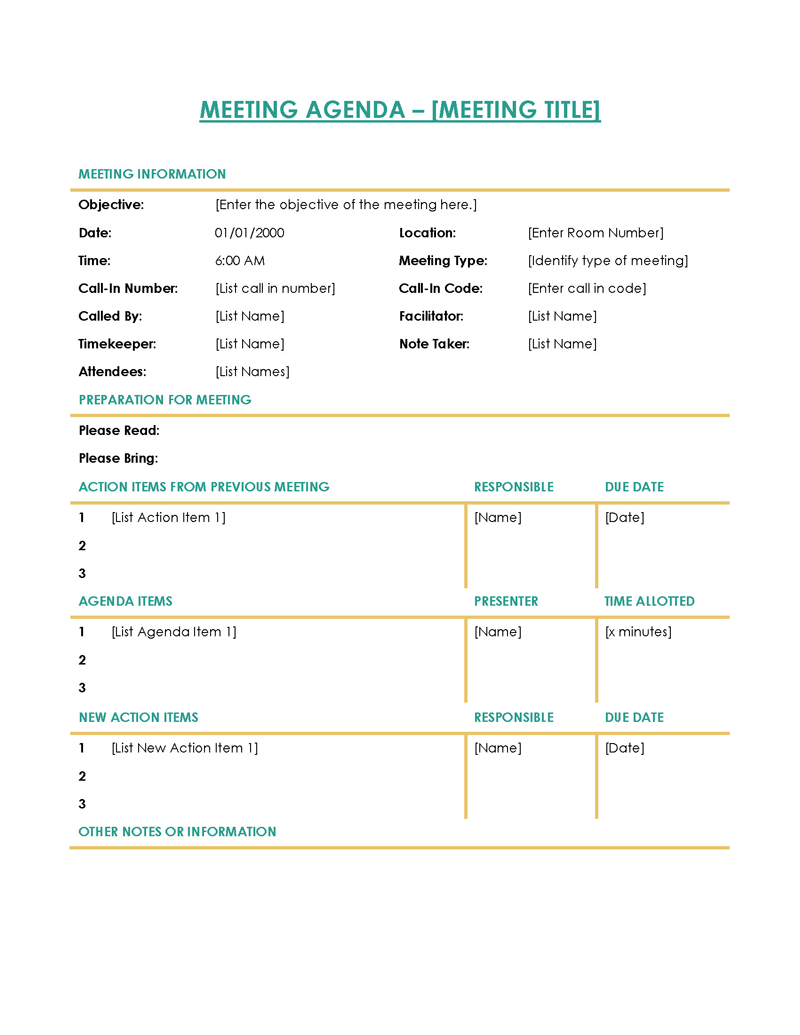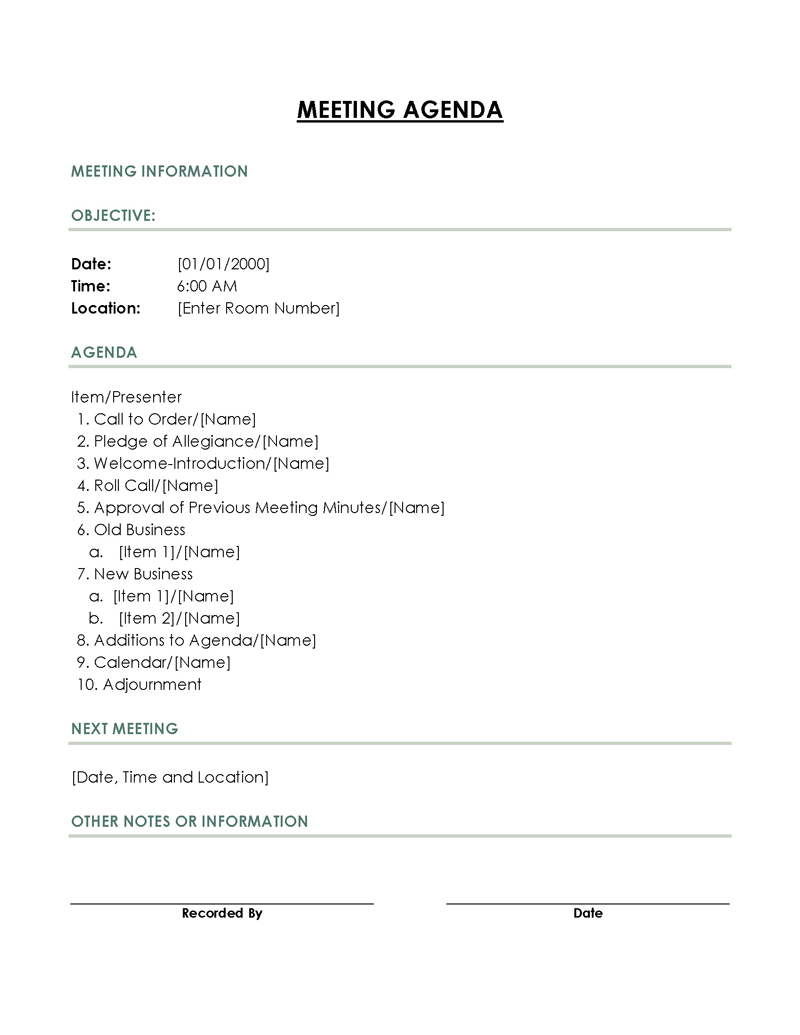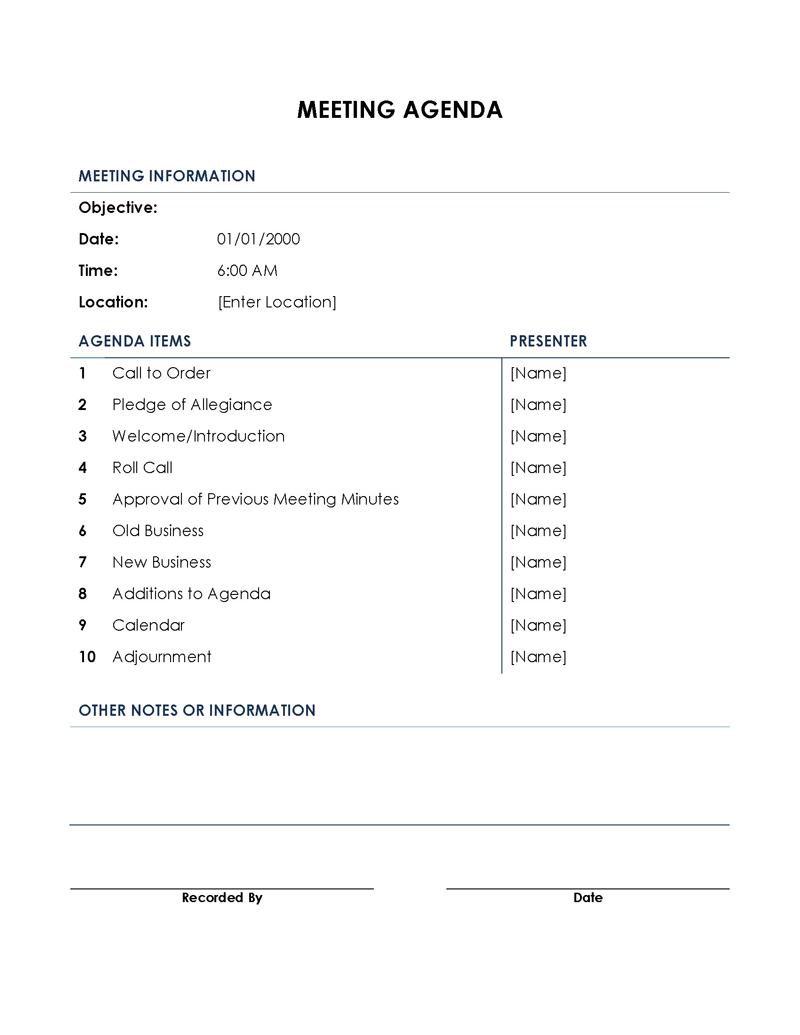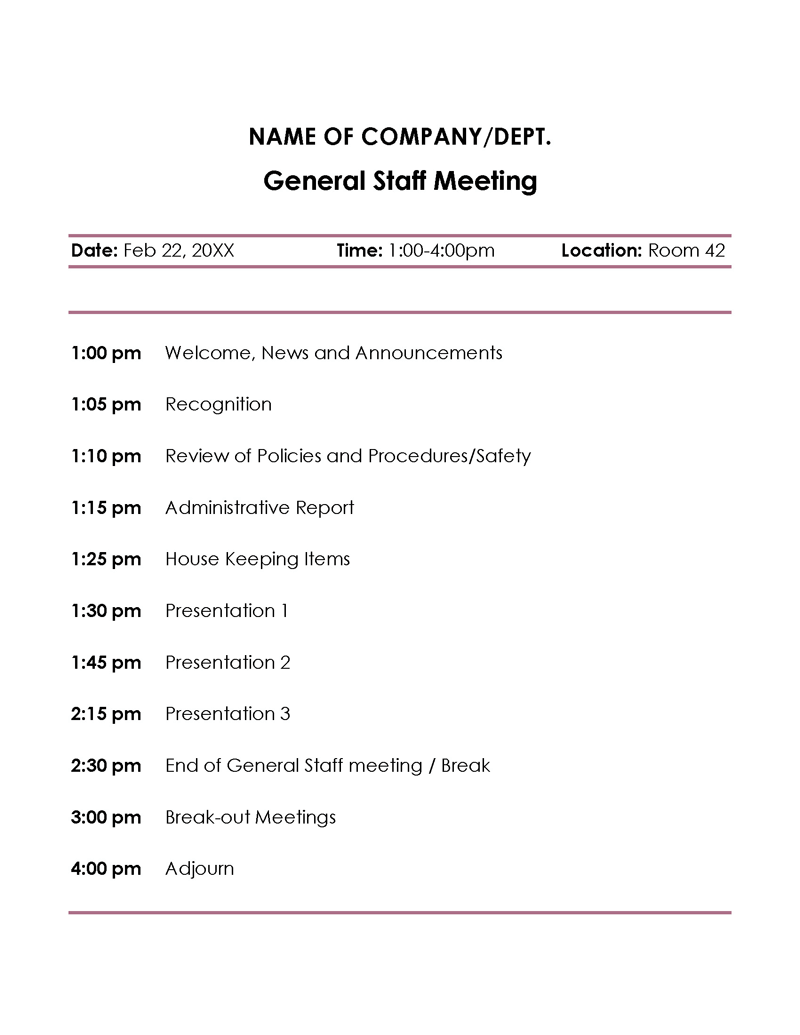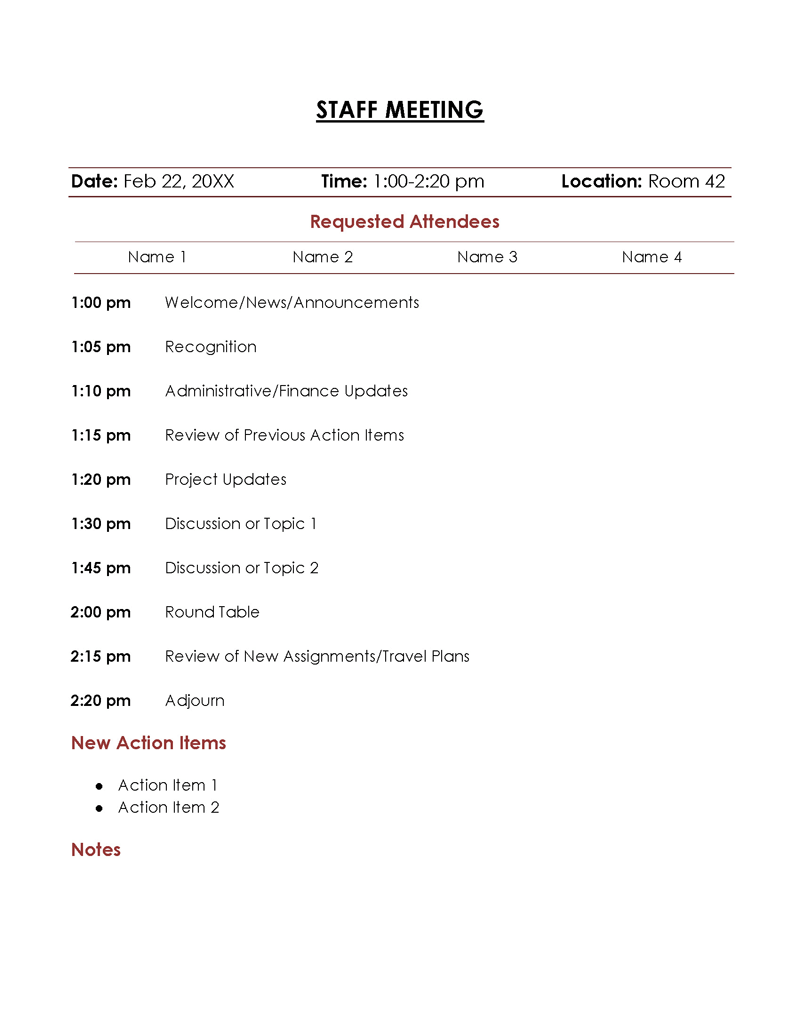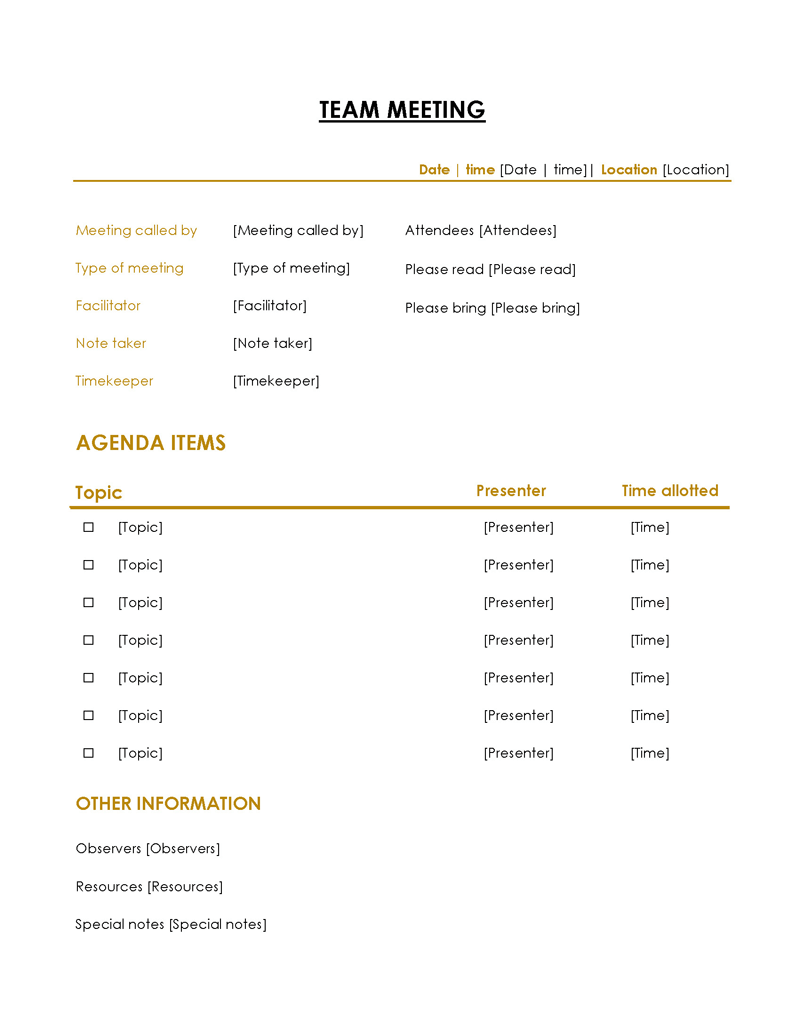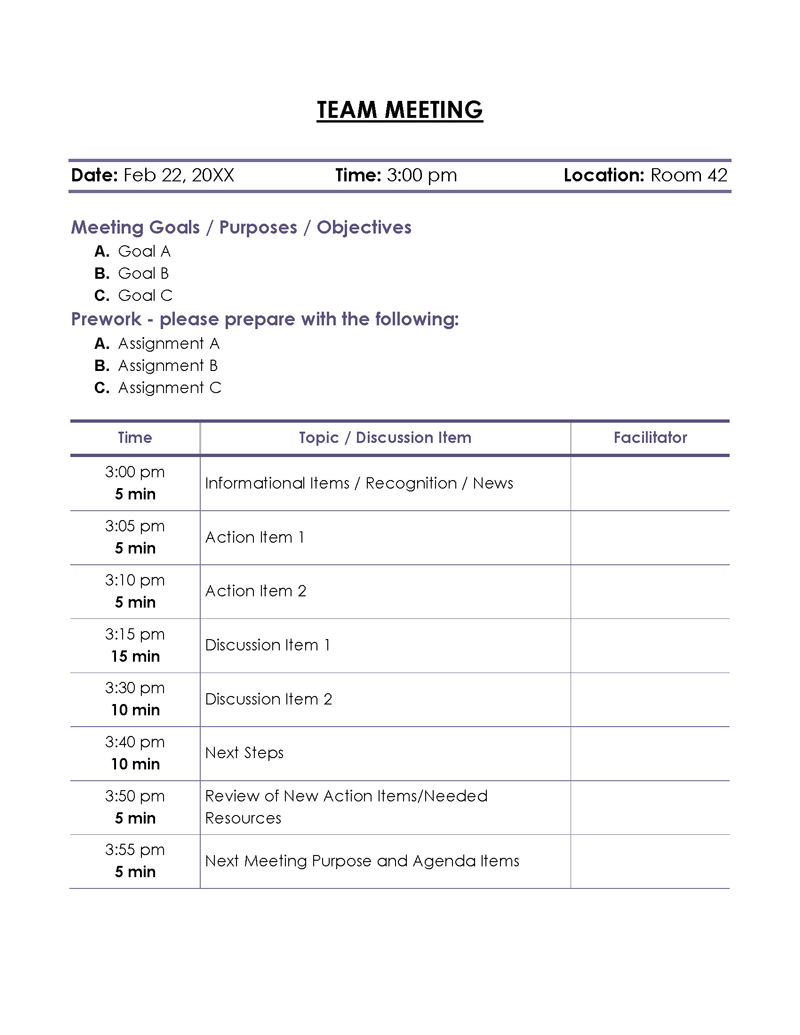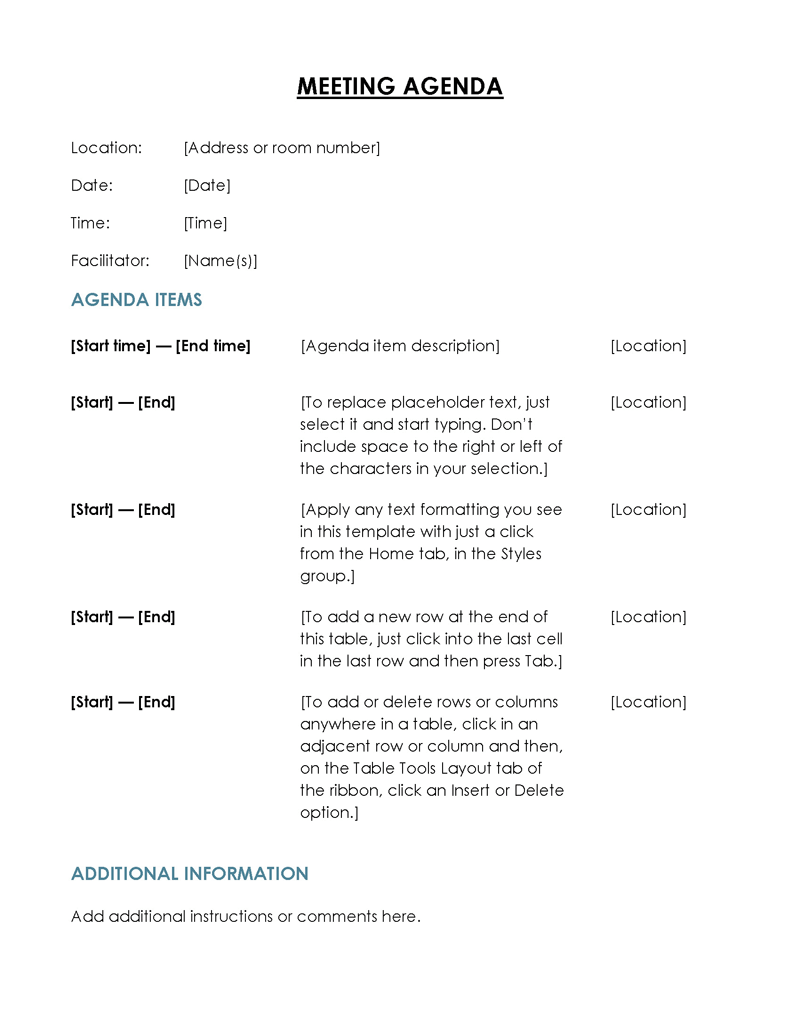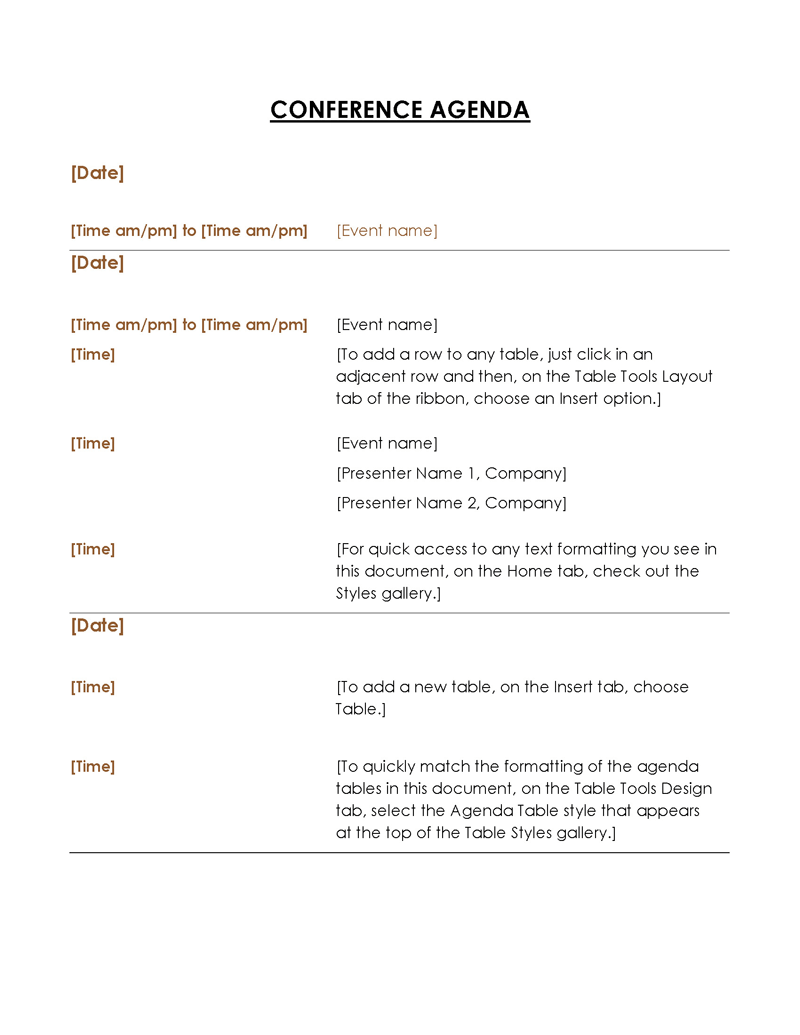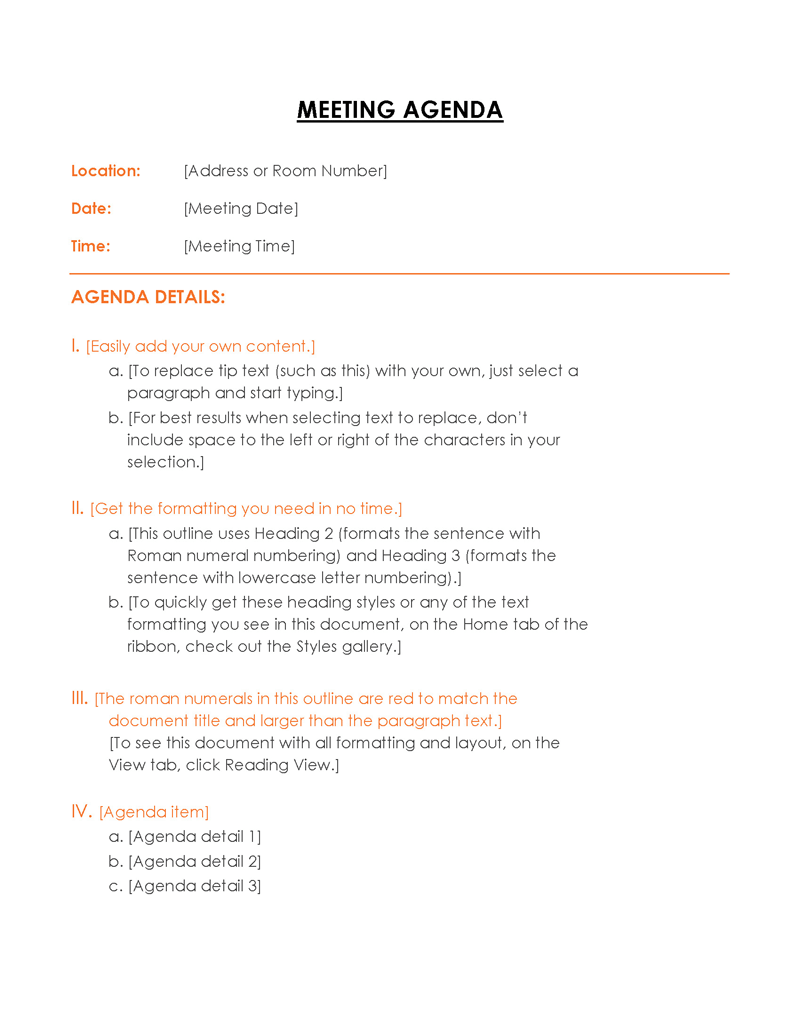Meetings are essentially meant to help a group of individuals share information, examine the past and the present, and plan the future. This is why it is crucial to host and attend a well-organized meeting. Conversely, a poorly organized meeting will result in time wastage and poor information communication. This will lead to decreased functionality and productivity amongst the meeting participants.
You must prepare a meeting agenda to ensure a productive and effective business discussion. Preparing a meeting agenda will ensure that every attendee is focused. This leads to minimum time wastage and increased productivity. Also, an agenda will ensure that the business meeting minutes are taken.
Remember, the essence of an agenda is to guide the attendees on how the meeting will unfold and inform them about activities that will take place during the meeting. Therefore, when preparing for a meeting, you must be careful about the information you include in the agenda.
This article will teach you more about a business meeting agenda, what to include, why you need it, and its importance.
Business Meeting Agenda Templates
A business agenda is a crucial document that allows you to conduct business meetings effectively. This is why it is essential to pay attention when creating an agenda to ensure that all the relevant details are included. To avoid the hustle of creating a meeting agenda from scratch, we are providing you with unlimited access to our templates.
With these templates, you can create a perfect agenda covering all the crucial topics for your business meeting. Our business meeting agenda templates are free to download, easy to use, and can be customized to meet your requirements.
What is a Business Meeting Agenda?
An agenda is a document that acts as a blueprint for a business meeting. The document outlines the topics and activities to be discussed during the meeting. It also highlights the duration assigned to each topic. The topics mentioned in the agenda should be in line with the objectives the meeting is meant to achieve.
Also, the agenda should highlight the basic details of the business meeting, such as the date, time, location, and expected attendees. Apart from the time provided for each topic, the agenda should outline the order in which the topics will be discussed.
When creating an agenda, you need to analyze the objectives that will make the meeting meaningful, effective, and productive. Additionally, the objectives need to resonate and complement the vision and mission of the organization.
Specific examples of objectives that you can include in your meeting agenda are; team building, policy review, brainstorming, problem-solving, training, disaster management, mission and vision update, strategic planning, performance assessment, getting feedback, initiating a new project, information sharing, and so much more.
Before the commencement of the meeting, you need to have a pre-meeting where you create a checklist to ensure that all the relevant topics of discussions are listed and assigned adequate time. Additionally, it would be best to have a secretary record the minutes as the meeting progresses. The meeting minutes act as a point of reference during the next meeting. In the end, you need to have a post-meeting to analyze and examine the meeting minutes and file them for the next meeting.
Reasons You Need Business Meeting Agenda
A meeting agenda is to prepare the participants to attend the meeting. Therefore, a meeting agenda should be given to the attendees in advance to allow them to do their research on the topics as they prepare for the meeting.
Additionally, a meeting agenda establishes the most important topics to be covered and the expected results. Therefore, a meeting agenda can be used as a checklist of the expected decisions after the meeting has been concluded. Moreover, with a meeting agenda, the attendees will easily follow along, stay focused, and participate in the meeting. Most importantly, a meeting agenda ensures that the participants avoid swaying from the topic.
Therefore, hosting a business meeting without an agenda is pointless. This is because the meeting will be disorganized, there will be no topics of discussion, and it will be a total waste of time.
How Meeting Progresses Using Business Meeting Agenda
It is crucial to prepare a meeting agenda if you want to have a practical, informative, and productive meeting.
The steps mentioned below are followed when conducting a business meeting using a well-prepared meeting agenda:
Opening
The chairperson or leader of the meeting usually starts by making an opening statement. At this point, they will welcome all the attendees before briefly stating the goals of the meeting.
Attendance
The meeting secretary takes note of those who have attended the meeting and those individuals who are absent next.
Agenda approval
The meeting facilitator and attendees take time to assess the meeting agenda. During this time, the attendees have a chance to voice their ideas about the agenda. Afterward, a vote is cast to approve the final agenda.
Distribution of previous meeting minutes
The meeting secretary gives the minutes of the previous meeting to the attendees. The attendees examine the minutes to see if any crucial point needs to be addressed in the current meeting. The attendees then vote to choose and approve the minutes.
Notes-taking
It is essential to take notes as the meeting progresses. The notes are evidence that the meeting took place. Notably, the notes are either taken for a board or departmental meeting. Also, the notes should indicate if the number of attendees met the company’s threshold to make the meeting formal.
Dissection of the discussion
During the meeting, notes are taken for each topic discussed and conclusion is reached. Afterward, it is taken into consideration who discussed what topic and what final decision was made after the discussion. If any vote was cast, it should be recorded to measure the decisions’ effectiveness. Dissecting the meetings’ discussions makes it easier for the participants to understand the topics discussed and why certain decisions were made.
New business
New business topics are discussed in the meeting too. At this time, new project ideas and other relevant topics are considered. The relevant documents required are distributed at this phase of the meeting. Also, the attendees should be involved in the decision-making to encourage the team.
Other items
This is when the participants get a chance to discuss any other topics not mentioned in the meeting agenda. However, if no relevant items are discussed, this section can be eliminated from the meeting agenda.
Meeting adjourned
After the discussions, the facilitator can dismiss the meeting if no relevant topics are left to discuss. The time the meeting ended and concluded should be indicated with a closing statement.
Must-Haves of a Business Meeting Agenda
Below are the elements that are mandatory to have in a meeting agenda:
Meeting details
An agenda should include all meeting details. These meeting details are the number of attendees and their names, date, time, and venue of the meeting. Teleconference and conference links should be provided in advance if the meeting is held online. Additionally, any additional documents should be attached to the agenda beforehand.
Communicate any meeting changes to the attendees in advance. You can make a note and present it to the participants before the meeting.
Discussion topics
A business agenda should contain detailed discussion topics. These topics are the main reason for holding the meeting. In addition, adequately labeled discussion topics will encourage a productive meeting.
The discussion topics should be important business matters that must be dealt with urgently. With discussion topics, you and your team can make accurate decisions based on the discussions from the meeting. Note that every member in the meeting should play a role in choosing a discussion topic for the meeting.
Specify your speakers
With the discussion topics in place, it is essential to select individuals who will be responsible for handling each selected topic. Identifying your speakers will allow them to have enough time to do their research and prepare the topics before the meeting.
The speakers should be identified beforehand. This way, their names will be listed beside the discussion topics they will be responsible for. These speakers are tasked with organizing their data and explaining their findings to the participants.
Minutes or notes section
It is necessary to include minutes or notes section in the meeting agenda. The attendees must take notes as the meeting progresses. These notes can be taken during the discussion of each topic. Taking notes will promote concentration and participation from the attendees. In most cases, these minutes may be used as a point of reference after or in future meetings.
You can make accurate decisions with these points because you will have essential points to refer to. Therefore, recording the meeting minutes is crucial, especially for a business meeting.
Action items section
This is a section in the meeting agenda where the attendees get to know the tasks and the amount of time designated for each task. Therefore, the action items section should be constantly updated to ensure that every attendee knows the task they are responsible for. Additionally, updating the action items section will allow the participants to see which items are still unoccupied and their due dates.
Parking lot section
This section is assigned to those important topics that are not related to the objectives of the meeting. In this case, the participants are encouraged to note such topics so they can be discussed later in the meeting or on a different day.
Including a parking lot section in the meeting agenda will encourage the attendees to share ideas that they feel are crucial. In addition, this section will prevent the meeting facilitator from dismissing the participant’s ideas that do not directly relate to the meeting objective.
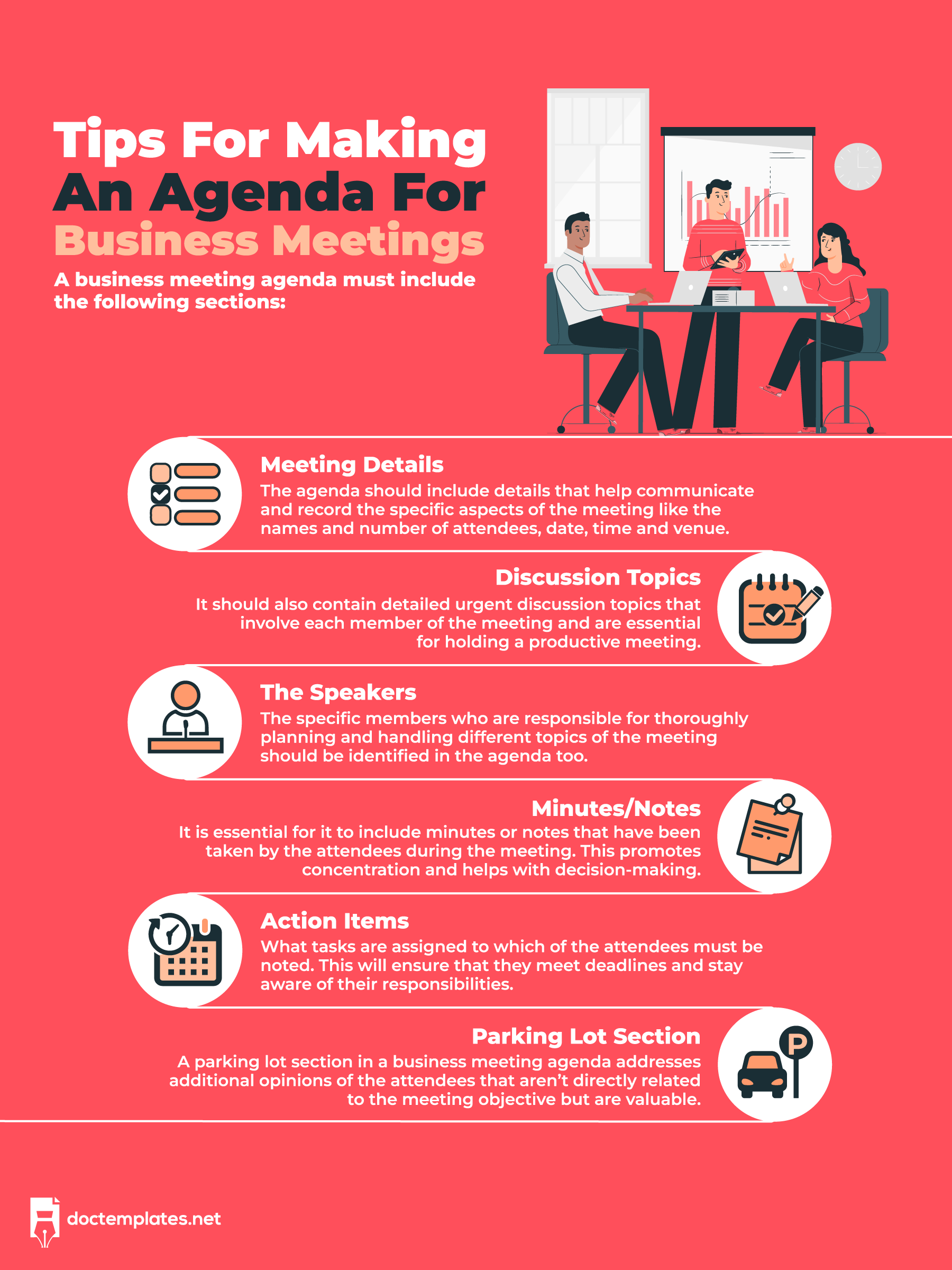
Effective Practices
A meeting agenda is primarily designed to help the participants share information and improve their productivity at work.
Below are tips that are essential when it comes to making an agenda for a meeting:
Choose the objective of the meeting
First, you need to determine the main objective of the business meeting. The objective of the meeting should be in line with the vision and mission of the organization. A good meeting objective will help you explain the significance of attaining the intended goal.
Additionally, the objective of the meeting will determine if the attendees will support the decisions made and the results achieved from the meeting. Moreover, a good objective will encourage your team to participate actively and work towards attaining the intended goals. An example of a good meeting objective is strategic planning or crisis and disaster management.
Topics should be on meeting goals
Ensure that you select topics that meet the goals of the business meeting. The selected topics should be indicated in your meeting agenda. The topics will allow the participants to indulge in a discussion that will help yield the expected results.
These topics should be informative and help increase the productivity of your team. Note that the topics should be in line with the meeting objective. This will allow the attendees to share their insights and ideas concerning the meeting objective freely.
Allot specific times for each topic
Once the topics are in place, you must allocate specific time for each topic. However, a topic should not take too much time to be covered as it will make the meeting too long and tiring. The time assigned to each topic will dictate how the meeting will unfold. Additionally, this will help you to keep track of time and ensure that the meeting is well managed.
Review previous meeting agendas
Reviewing the agendas of previous meetings is vital as it allows you and your team to revisit important topics that need further discussion. Additionally, this will allow those who were upset to get up to speed with the rest of the team. Also, previous meeting agendas are evidence of certain decisions or results reached.
Moreover, reviewing previous meeting agendas will help you create a new agenda. Additionally, the previous meeting agenda is a reference when discussing the current meeting.
Include preparation task assignments
It is crucial to assign tasks to the participants before the meeting. These tasks are to be presented during the meeting. This will allow the attendees to prepare for the meeting adequately. The assignments should be in line with the meeting agenda. This will encourage the attendees to participate in the discussions actively and share their ideas and suggestions.
With the participants well-prepared for the meeting, you will be able to have informative discussions and make better decisions. In addition, assigning tasks to attendees will result in a productive meeting for you and your team.
Distribute the agenda to the participants
The participants need to have the meeting agenda beforehand. This allows them to know when, where, and why the meeting occurs. Additionally, they will have enough time to understand the meeting objectives and prepare their research and any questions regarding the topics to be covered during the meeting.
Moreover, the participants will know what to expect and what is expected of them during the meeting. This will encourage informative discussions and accurate decision-making.
Determine the presenter of each agenda topic
To create a compelling business meeting agenda, you need speakers who will handle and discuss the meeting topics. Each topic should have a speaker who will lead the discussions under that topic. This will encourage teamwork and active participation from your team.
Additionally, this will allow the participants to discuss their ideas and share new insights that will help better the company’s functionality.
Summary
You must have a well-prepared meeting agenda to have a productive and successful meeting. Meeting agendas allow you and your team to prepare for the meeting beforehand. Additionally, with an agenda, you will effectively execute the objectives of the meeting promptly. However, each meeting requires a different approach. This is why it is important to review previous meeting agendas to get ideas on how to handle and deal with a new meeting.
It is usual for participants to sway from the topic once in a while. But with a meeting agenda, they will focus and concentrate on the meeting. With an agenda, you will have a blueprint of what will happen during the meeting. As a result, there will be minimal time wasted as the participants will be focused on achieving the objectives of the meeting.
